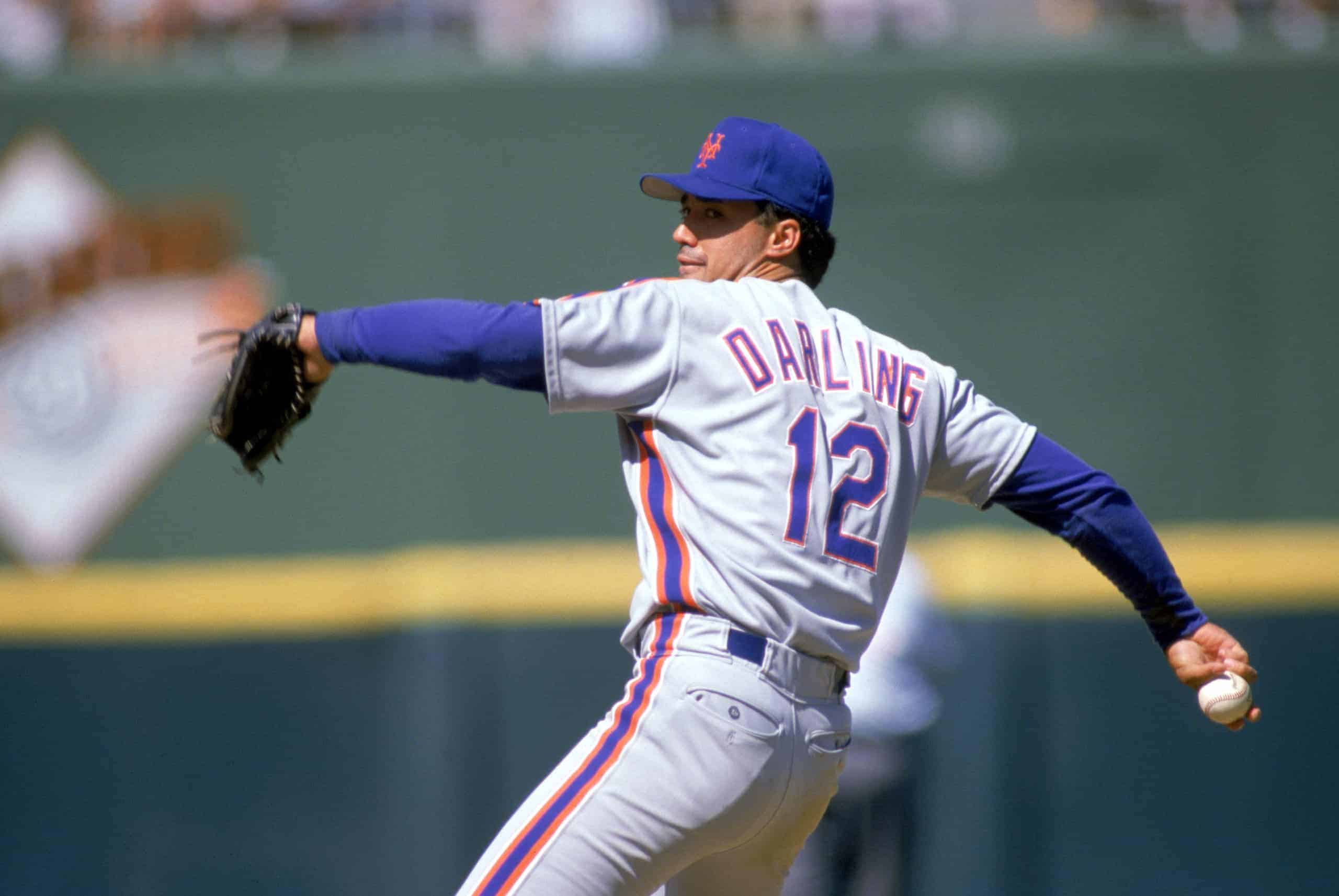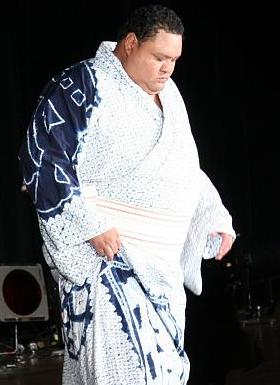Hawaii ranks 40th among all U.S. states in population with 1,440,196 residents, according to the 2022 U.S. Census Bureau estimate. With its relatively small population, it would stand to reason that Hawaii would not produce as many world-class athletes as other more populous states. The numbers just don’t seem to be in Hawaii’s favor.
However, the Aloha State outperforms many other more populous states when it comes to major sports stars. (For a look at the darker side of sports, click here to see the 17 most talked-about corruption scandals in sports history.)
The state’s lovely weather is surely part of Hawaii’s higher-than-expected production of top-tier athletes. Compared to a state where winter temperatures rarely drop below 65°F, athletes in Hawaii can hone their skills non-stop throughout the year.
More than the weather, though, is the long-standing importance of athletics in Hawaiian culture. Surfing, outrigger canoe paddling, an ancient version of bowling known as ʻulu maika, and other sports are deeply ingrained in Hawaii’s history. Skill, precision, athleticism, and competition were valued and cultivated by Hawaiians centuries before Hawaii became the 50th state to join the Union in 1959.
Here’s a look at 10 Hawaiian sports stars who are carrying on that long tradition of Hawaiian athletic excellence. To compile this list of the biggest sports stars from Hawaii, 24/7 Tempo used editorial discretion to weigh a variety of different metrics such as individual awards, individual and/or team championships, and the lasting impact the athlete had on his/her sport.
10. Michelle Wie West
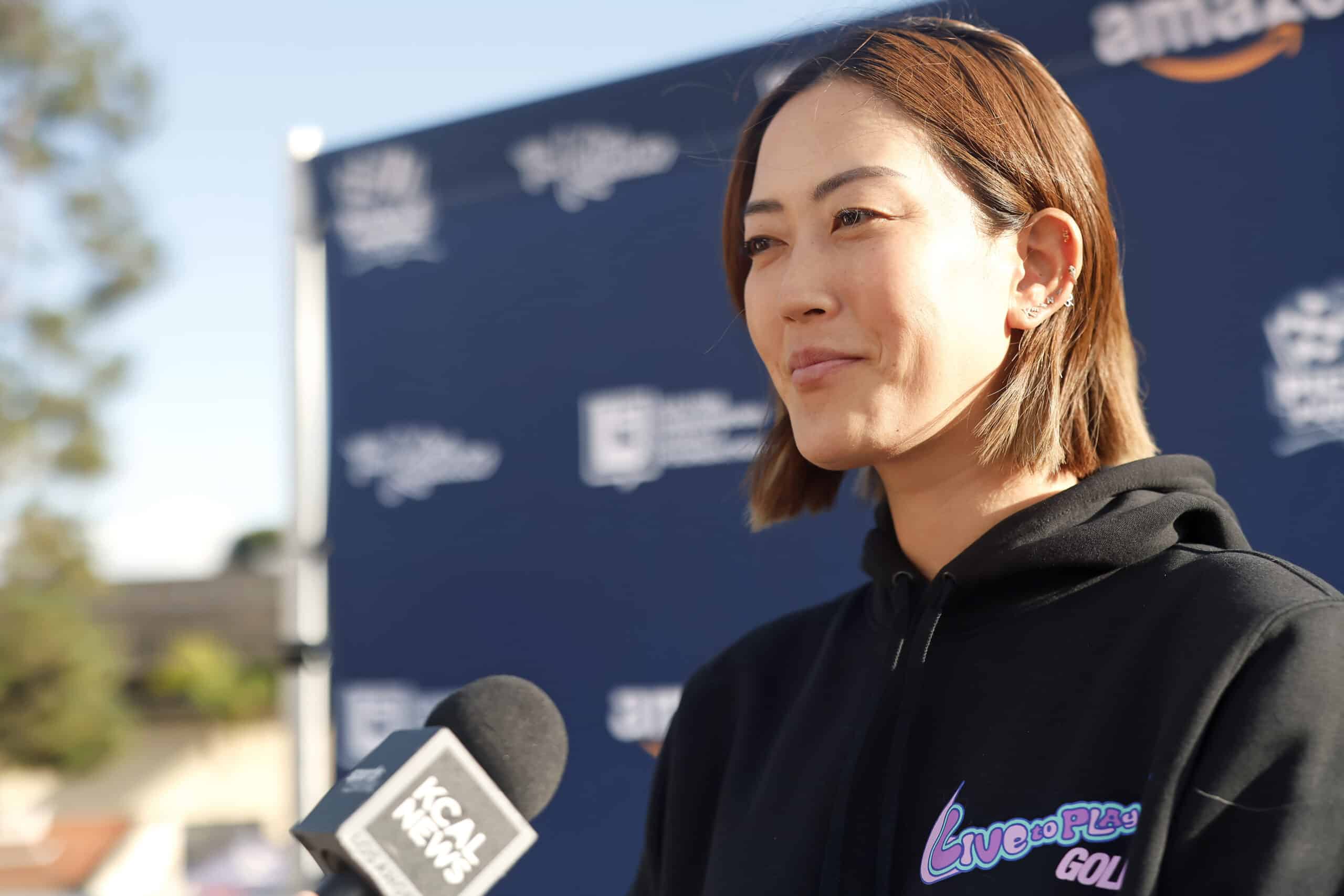
- Birthplace: Honolulu
- Sport: Golf
Michelle Wie was a golf prodigy. At 10 years old, she became the youngest player to qualify for a United States Golf Association (USGA) amateur championship. In 2003, she became the youngest player to win the U.S. Women’s Amateur Public Links Championship at the tender age of 13.
The achievements continued to mount for the young Hawaiian. At 14, Wie became the youngest woman ever to compete in the Curtis Cup. She turned pro in 2005, one week before her 16th birthday. Wie was the captain of the victorious U.S. team at the 2009 Solheim Cup.
Wie’s LPGA career included five wins. Her lone major victory came in 2014 when she won the U.S. Women’s Open. Wie announced in 2023 that she was retiring from professional golf, primarily to focus on being a mom to her daughter, Makenna. Wie married Jonnie West, son of basketball legend, Jerry West, in 2019.
Many commentators have argued that Wie’s career did not live up to expectations, especially considering her unprecedented achievements at such a young age. When she burst onto the international stage, many openly wondered if she could be the next Annika Sörenstam, widely regarded as the greatest player to ever compete in the LPGA. Wie has certainly not reached that level of dominance, but her impact on the sport should not be discounted. No one has matched her achievements at such a young age, and she is unquestionably the greatest golfer to hail from Hawaii.
9. Tua Tagovailoa
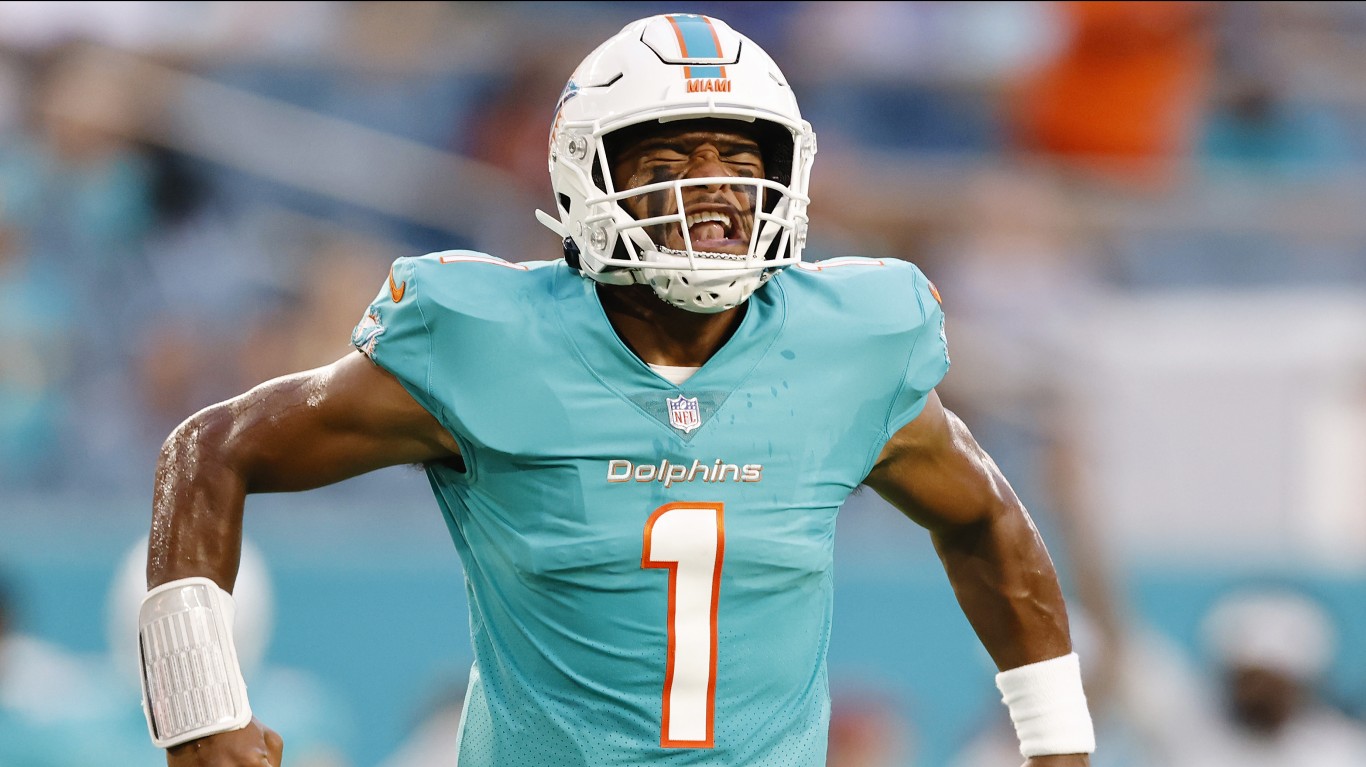
- Birthplace: Ewa Beach
- Sport: Football
Tuanigamanuolepola “Tua” Tagovailoa slept with a football under his arm as a young child. At just 8 years old, the young quarterback was already throwing a football 30+ yards when most of his peers could only throw passes of 10 yards or less.
At St. Louis High School in Honolulu, Tagovailoa racked up 8,158 passing yards, the most in Hawaii high school football history. He completed 84 touchdown passes. Tagovailoa also rushed for 1,727 yards, adding 27 rushing touchdowns. As a high school senior, he led his team to the 2016 HHSAA District 1 State Championship. He was named the 2016 Gatorade State Player of the Year for Hawaii.
Tagovailoa played college football at the University of Alabama. As a member of the Crimson Tide, he passed for 7,442 yards and 87 touchdowns. He rushed for nine additional touchdowns. The team posted a record of 22-2 with Tagovailoa as the starting quarterback.
In the 2018 College Football Playoff National Championship, head coach Nick Saban benched quarterback Jalen Hurts in the second half in favor of Tagovailoa, a true freshman. Hurts had only mustered 21 passing yards in the first half and Alabama found itself down 13-0 at halftime. With Tagovailoa under center, the Crimson Tide went on to defeat the Georgia Bulldogs by a score of 26-23. Tagovailoa threw a 41-yard touchdown pass to win the game in overtime. He was named the offensive MVP of the championship game.
Tagovailoa was sidelined in his junior year due to a devastating injury. He decided to forego his senior year to enter the National Football League (NFL) draft. Despite lingering concerns about his injury, he was selected fifth overall in the draft by the Miami Dolphins.
In his burgeoning NFL, Tagovailoa has been impressive. His name has been included in early MVP conversations in this current NFL season. By the time he hangs up his cleats, Tagovailoa could rank significantly higher on the list of Hawaii’s greatest athletes.
8. Marcus Mariota

- Birthplace: Honolulu
- Sport: Football
Marcus Mariota inspired Tua Tagovailoa and a host of other Hawaiian football players. Few could have predicted Mariota’s future influence when he was in high school, though. The quarterback didn’t even start for the St. Louis High School football team (the same school that produced Tagovailoa) until his senior year. Mariota was more well-known for his dominance in track and field than football. That all changed, when he was under center for the Crusaders as a senior. He threw for a mind-boggling 2,597 yards and 32 touchdowns during his senior season. He also rushed for 455 yards and seven touchdowns that year, leading the team to an 11-1 record and a state championship. Mariota was named the 2010 Hawaii Gatorade Player of the Year.
Mariota played college football at the University of Oregon. He led the Ducks to a 12-1 record as a freshman and an 11-2 record as a sophomore. His junior year, however, would forever cement his legacy in college football. During that magical season, Mariota passed for 3,783 yards and 38 touchdowns, while throwing just two interceptions. He rushed for 669 yards and 14 scores. He even caught a touchdown pass. The Ducks finished with a 12-1 record and advanced to the national championship game where they were defeated by Ohio State.
Mariota received the Heisman Trophy, the pinnacle award in college football, after his performance in the 2014 season. He was not only the first Oregon player to win the award, but he was also the first Polynesian and the first player from Hawaii to secure the Heisman. Hawaii had long been known for producing bruising linemen, but Mariota showed the world that elite quarterbacks could also hail from the Aloha State.
Mariota opted for the NFL draft rather than playing his senior season at Oregon. He was selected by the Tennessee Titans as the second overall pick in the 2015 NFL draft.
7. Sid Fernandez
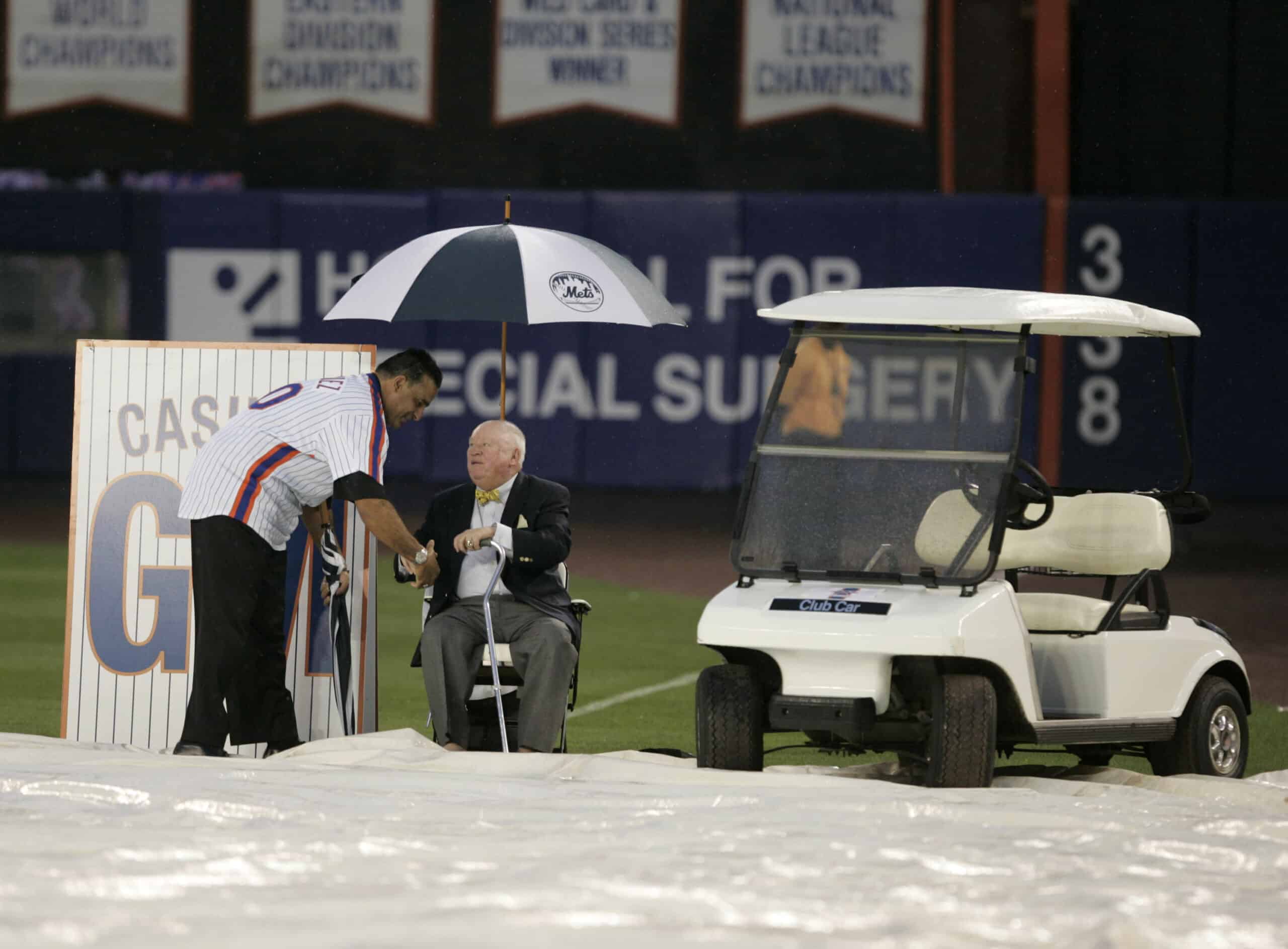
- Birthplace: Honolulu
- Sport: Baseball
Charles Sidney “Sid” Fernandez pitched for the Kaiser High School baseball team in Honolulu. In fact, he threw a no-hitter in his very first start for the Cougars. That dominant performance in 1980 proved to be a harbinger of things to come.
In his senior year, Fernandez helped lead his high school team to the 1981 state championship. He was then drafted right after high school by Major League Baseball’s (MLB) Los Angeles Dodgers.
Fernandez played 15 seasons in MLB, taking the mound for the Dodgers, New York Mets, Baltimore Orioles, Philadelphia Phillies, and Houston Astros. He won a World Series ring with the Mets in 1986.
Fernandez was selected for the MLB All-Star Game 1986, becoming the first native Hawaiian to play in the Midsummer Classic. He followed with another all-star season in 1987.
The left-hander retired in 1997, with a career record of 114-96. He had a career 3.36 earned run average (ERA) and recorded 1,743 strikeouts. He is fourth all-time in hits per nine innings, trailing only Nolan Ryan, Sandy Koufax, and Clayton Kershaw.
Fernandez wore #50 on his uniform as a nod to his home of Hawaii, the 50th U.S. state. The theme from “Hawaii Five-O” was played in Shea Stadium on the days “El Sid” was the starting pitcher for the Mets.
Fernandez was inducted into the Hawaii Sports Hall of Fame in 2001.
6. Ron Darling
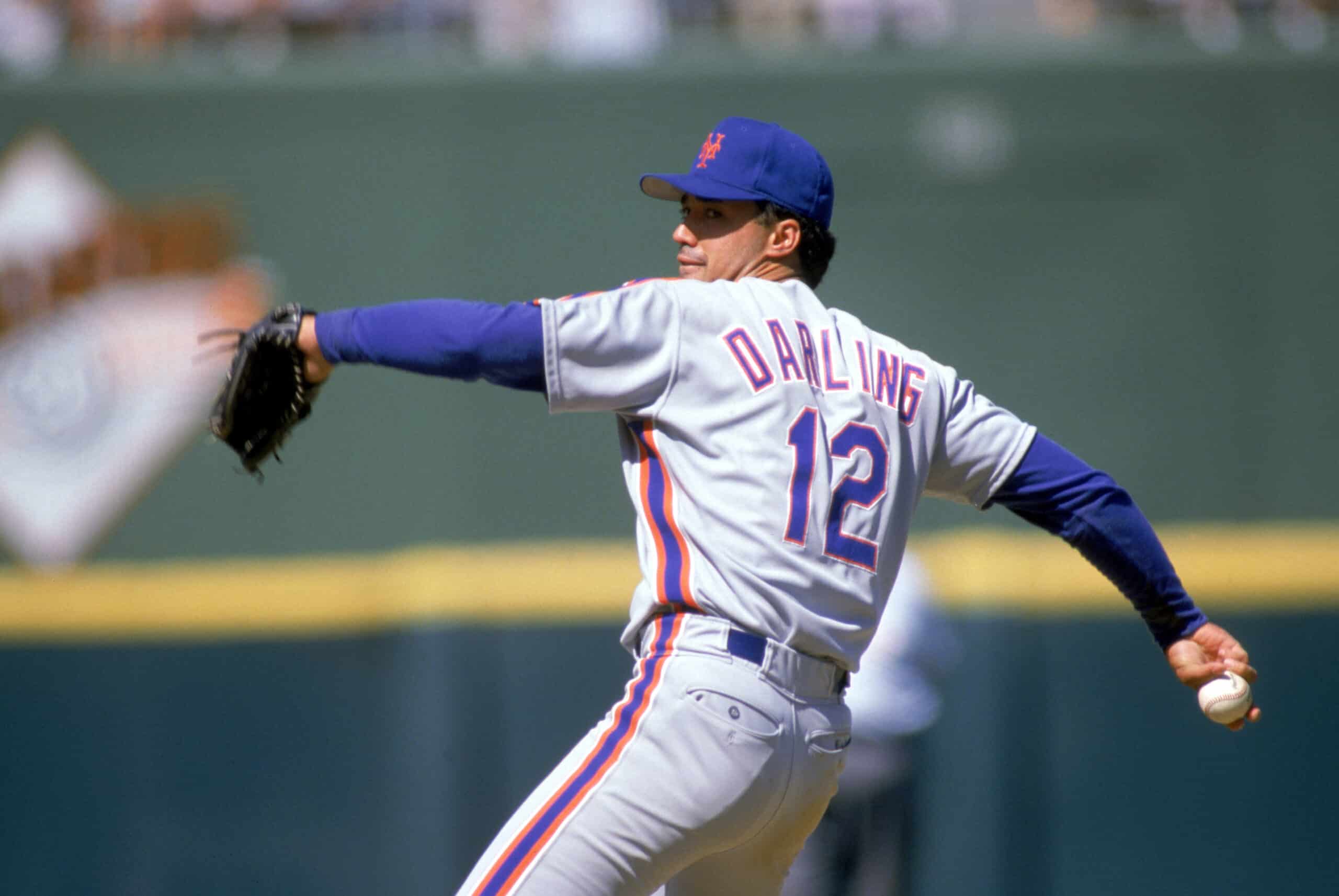
- Birthplace: Honolulu
- Sport: Baseball
Ron Darling played college baseball for Yale, although he was initially recruited as a quarterback for the school’s football team. After one year of college football, Darling gave it up to focus solely on baseball.
He began as a shortstop, but the powerful throwing arm that had made him a sought-after quarterback prompted the team to make him a pitcher.
Darling pitched in what is widely considered the greatest NCAA baseball game ever played. During his junior year in 1981, Darling and the Yale Bulldogs faced off against the Red Storm from St. John’s. Opposing Darling on the mound was his future Mets teammate, Frank Viola.
The game went to extra innings. Darling pitched a no-hitter into the 11th inning. St. John’s finally recorded a hit against Darling in the 12th inning. The game was then paused as the public address announcer told the crowd that Darling’s 11-inning no-hitter was the longest in NCAA history. The pitcher received a standing ovation which included members of the opposing team. St. John’s proceeded to score the game’s only run on a double steal.
Darling was drafted by the Texas Rangers in 1981. He never made it to the Ranger’s big league team, but instead was traded to the Mets. He was named an All-Star in 1985 and was a member of the Mets’ World Series championship team in 1986, alongside fellow Hawaiian Sid Fernandez. Darling also won a Gold Glove in 1989.
Darling played 13 seasons in MLB. His most memorable years were spent with the Mets, but he also played for the Montreal Expos and the Oakland Athletics. He ended his career with a record of 136–116, notching 1,590 strikeouts and a 3.87 ERA. He pitched 13 shutouts and 37 complete games.
5. Olin Kreutz
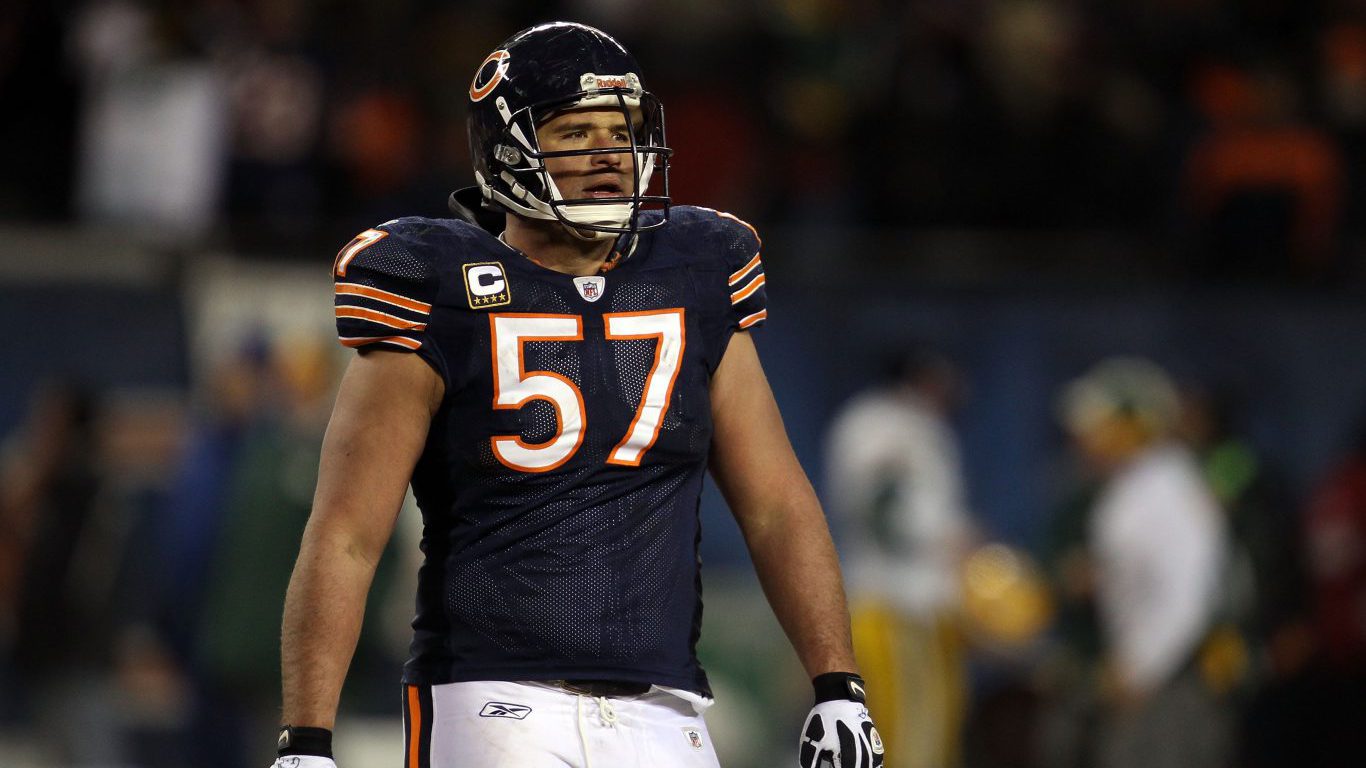
- Birthplace: Honolulu
- Sport: Football
Olin Kreutz played football at St. Louis High School, already noted to have produced other great players such as Marcus Mariota and Tua Tagovailoa. During his high school athletic career, Kreutz also lettered in track and field and wrestling, winning the state wrestling heavyweight championship.
He played college football at the University of Washington. After his junior year, he entered the NFL draft and was selected by the Chicago Bears in the third round.
In Kreutz’s dominant NFL career, he was selected for the Pro Bowl six times. He spent most of his career with the Bears, along with a short stint with the New Orleans Saints.
Kreutz was named to the NFL’s All-Decade Team for the 2000s. He was one of, if not the greatest center of the decade. Many have argued that Kreutz’s career is worthy of the Pro Football Hall of Fame. His chances may be diminished, though, because he played mostly on losing teams with a seemingly endless carousel of quarterbacks.
4. Buster Crabbe
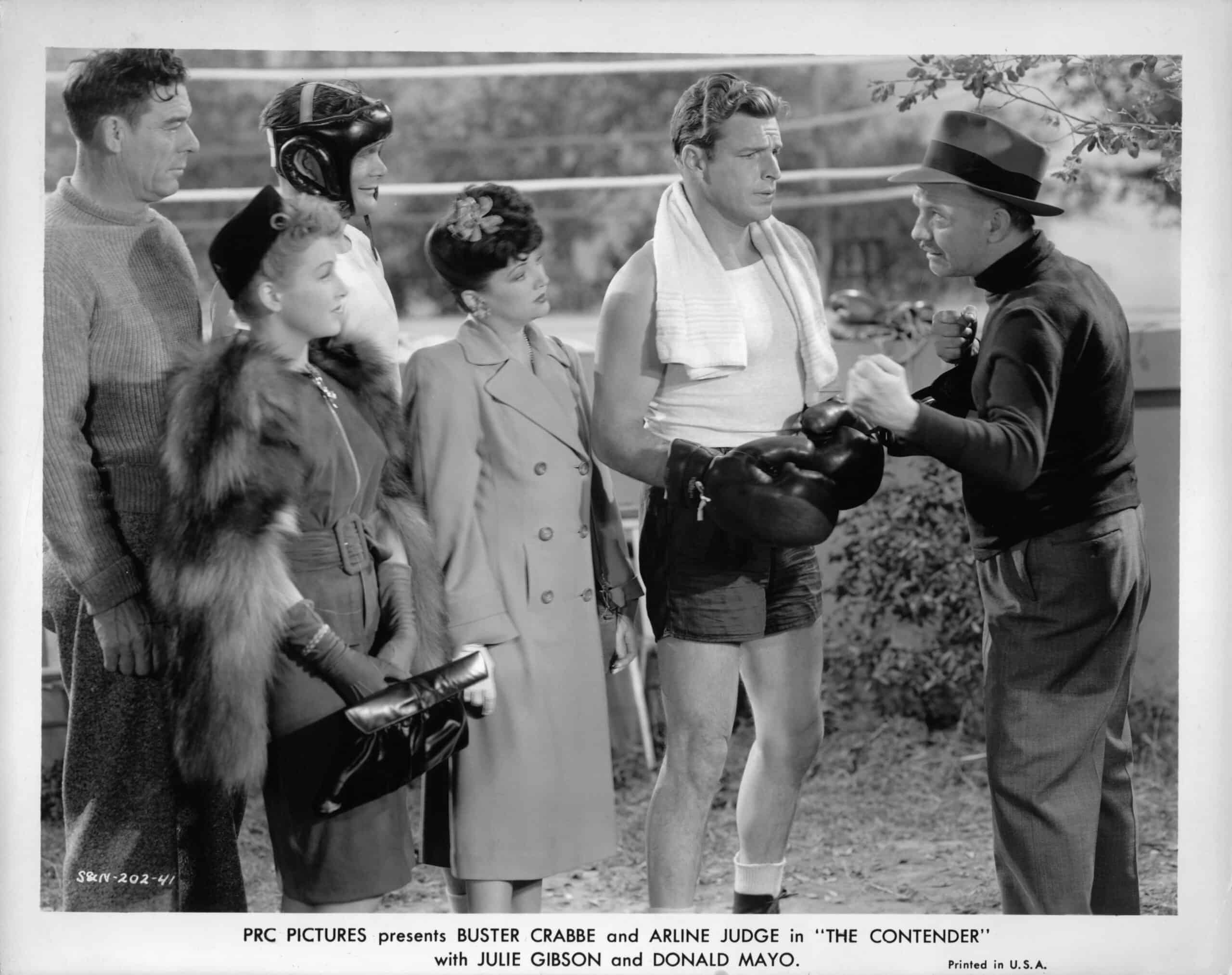
- Birthplace: Oakland, California
- Sport: Swimming
Clarence “Buster” Crabbe was born in California in 1908, but his family moved to Hawaii when he was two years old so his father could take a job as an overseer on a pineapple plantation. Growing up in Hawaii gave Crabbe the opportunity to become an excellent surfer and a hall of fame swimmer.
Crabbe competed in multiple sports at Punahou High School, winning 16 letters in basketball, football, basketball, track, and, of course, swimming. He attended the University of Hawaii where he qualified for the U.S. swimming team. The Hawaiian swimmer won a bronze medal in the men’s 1,500-meter freestyle at the 1928 Olympic Games. Following the Olympics, Crabbe set a world record in the men’s 300-meter backstroke at a competition in Austria.
Crabbe transferred to the University of Southern California where he continued to work toward his goal of competing in the 1932 Olympics to be held in Los Angeles. He won a gold medal at those games, setting an Olympic record in the men’s 400-meter freestyle. Crabbe won his race by a mere one-tenth of a second, which he would later refer to as “the tenth of a second that changed my life.”
Japan dominated the men’s swimming competitions at those games. Crabbe was the only non-Japanese swimmer to win a gold medal at the 1932 Olympics.
After the Olympics, Crabbe moved on to acting, starring in an astounding 175 films. He played well-known characters such as Tarzan, Buck Rogers, and Flash Gordon.
While he is more well-known as a movie star, Crabbe deserves to be counted among the greatest sports stars to come from Hawaii. During his swimming career, Crabbe broke five world records and won more the 50 world and national swimming championships. He was inducted into both the International Swimming Hall of Fame and the Hawaii Sports Hall of Fame.
3. Brian Ching
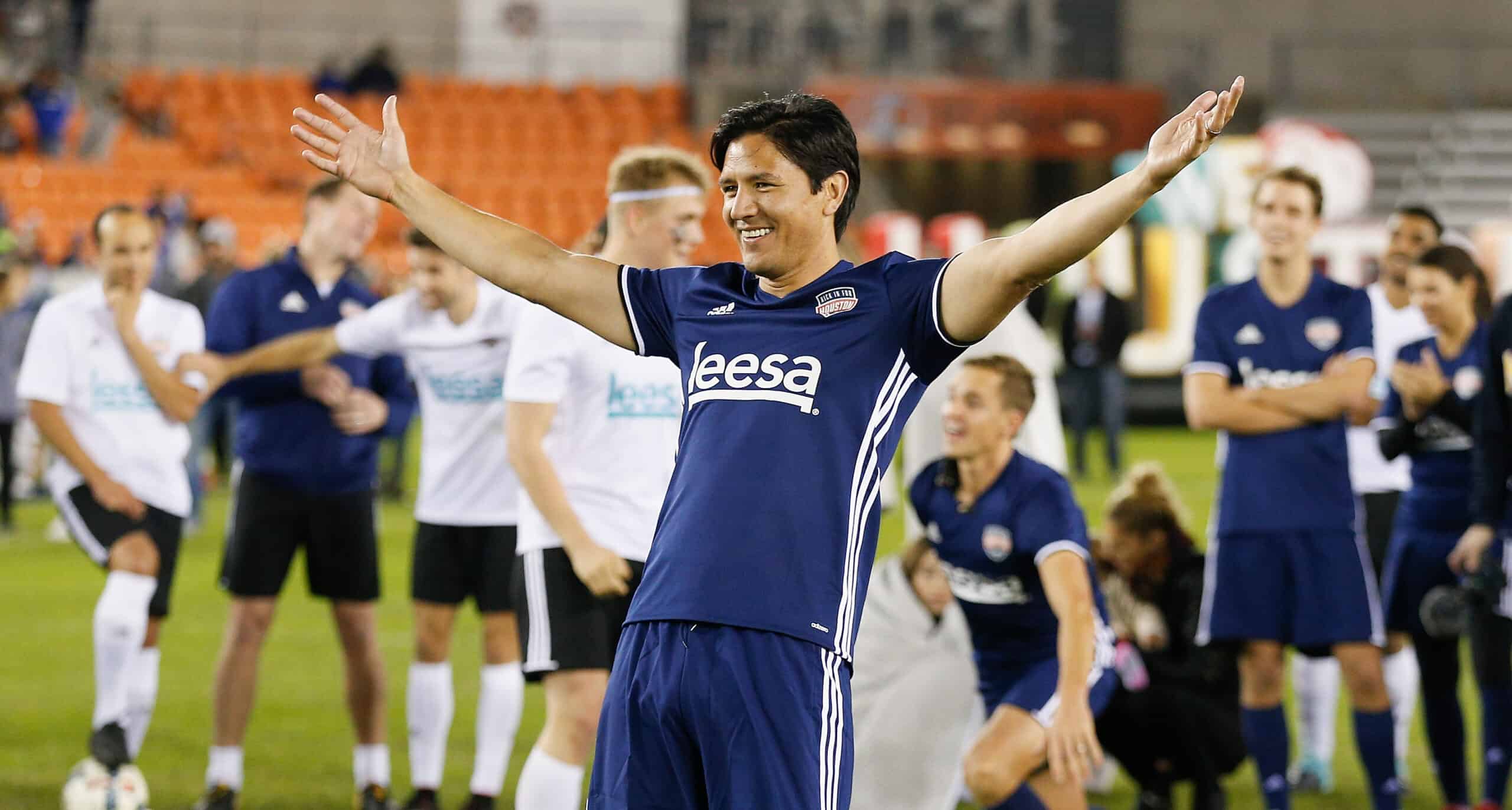
- Birthplace: Haleiwa
- Sport: Soccer
Brian Ching began playing soccer when he was 7 years old. While playing for a select travel team during his senior year of high school, Ching commanded the attention of Division I college coaches, including the staff from Gonzaga. He went on to a successful college soccer career as a Gonzaga Bulldog.
Ching made history when the Los Angeles Galaxy drafted him as the 16th overall pick of the 2001 Major League Soccer (MLS) SuperDraft. He was the first Hawaiian ever drafted by an MLS team.
Ching spent 12 years in MLS as a member of the Galaxy, Seattle Sounders, San Jose Earthquakes, and Houston Dynamo. His résumé includes three MLS Cup championships and six All-Star selections. He was named the Comeback Player of the Year in 2004.
Along with his MLS accomplishments, Ching made 45 appearances and scored 11 goals for the United States men’s national team. He was the first Hawaiian to represent the U.S. on the men’s team.
Ching was inducted into the Hawaii Sports Hall of Fame in 2016.
2. Chad Rowan
- Birthplace: Waimanalo
- Sport: Sumo
Chadwick Haheo Rowan grew up on the island of Oahu where he was a standout center for Kaiser High School’s basketball team. He briefly attended Hawaii Pacific University on a basketball scholarship, but quickly realized that it wasn’t a good fit.
After Rowan dropped out of college, his father introduced him to Jesse Kuhaulua, a native Hawaiian who was a sumo stablemaster in Japan. Recognizing Rowan’s potential, Kuhaulua convinced the young athlete to move to Japan and join his stable.
When Rowan made his professional sumo debut, he assumed the shikona (ring name) Akebono, which means “dawn.” He dominated in the lower divisions and quickly rose to the senior division. The stiffer competition in sumo’s senior level paused Akebono’s meteoric rise to sumo immortality, but not for long.
Following tournament victories in late 1992 and early 1993, Akebono was promoted to yokozuna, the highest rank in sumo. He was the first sumotori to reach that rank in 30 competitions or less. He was also the first first non-Japanese person to reach the highest level of Japan’s national sport.
The Hawaiian-born sumotori became a Japanese citizen in 1996, officially taking the name Akebono Tarō. He retired from the dohyō (sumo ring) in 2001, having won a remarkable 11 championships and a record of 432–122 record as a yokozuna.
While he is a legend in Japan for his sumo prowess, Americans may recognize him from WrestleMania 21 in 2005 when he faced off against The Big Show.
Akebono was inducted into the Hawaii Sports Hall of Fame in 2002.
1. Duke Kahanamoku

- Birthplace: Honolulu
- Sports: Swimming and Surfing
Duke Paoa Kahinu Mokoe Hulikohola Kahanamoku is a legend in Hawaiian sports lore. He was born in Honolulu in 1890 when Queen Liliʻuokalani still presided over the Hawaiian Kingdom.
Kahanamoku grew up in Waikīkī. He played soccer for Kamehameha School’s 1908 championship team, but his true athletic passion was found in the water.
In 1911, Kahanamoku obliterated the world record in the 100-yard freestyle, besting the old record by a staggering 4.6 seconds. However, officials from the U.S. mainland refused to acknowledge his feat, demonstrating a racial bias against Hawaiians that Kahanamoku would face for much of his life.
Kahanamoku made the 1912 Olympic team, thanks largely to fundraising efforts by his fellow Hawaiians. While he had been ignored the previous year due to racial discrimination, no one could ignore his accomplishments at the Olympic Games in Stockholm, Sweden. He brought home a gold medal in the 100-meter freestyle, along with a silver medal as part of the men’s 4×200-meter freestyle relay.
The 1916 Olympics were canceled due to World War I, but at the the 1920 Olympic Games in Antwerp, Belgium, Kahanamoku exceeded his performance eight years earlier, winning gold in both the 100-meter freestyle and 4×200-meter freestyle relay.
Kahanamoku used his swimming notoriety to shine a spotlight on another sport: surfing. In the early 20th century, surfing was relatively unknown outside of Hawaii. Kahanamoku traveled the world, performing surfing exhibitions everywhere from the United States to the shores of Australia.
Fiberglass surfboards had yet to be invented when Kahanamoku brought international attention to the sport. Instead, he surfed on a longboard made of koa wood. It measured 16 feet (4.9 meters) long and weighed 114 pounds (52 kilograms). In 1925, Kahanamoku paddled his longboard into the turbulent waters off of Newport Beach, California to rescue eight sailors whose boat had capsized in a terrific storm. The heroic act provided the inspiration for the rescue boards used by modern lifeguards.
In 1929, Kahanamoku’s legendary status grew even larger when he rode a gigantic Waikīkī wave for 1.125 miles. It is considered the longest ride in modern surfing history.
